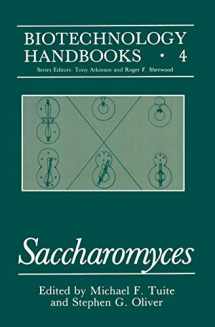
Saccharomyces (Biotechnology Handbooks, 4)
Book details
Summary
Description
In this volume we aim to present an easy-to-read account of the genus Saccharomyces that we hope will be of value to all students and researchers wishing to exploit this important genus, be it for academic or commer cial purposes. Individual chapters have been commissioned to cover specific aspects of the biology of Saccharomyces species: growth, genetics, and metabolism, with the emphasis on methodology. Basic principles are discussed without an over-detailed, step-by-step breakdown of specific techniques, and lengthy discussions of standard molecular, biological, and biochemical techniques (e. g. , polyacrylamide gel electrophoresis, protein purification, DNA sequencing) have been avoided. We hope the volume will provide a quick reference to the current status of a wide range of Saccharomyces-specific methodologies without focusing ex clusively on recent developments in molecular techniques which can be found in the ever increasing numbers of "cloning manuals. " By necessity, much of what is described in this volume concentrates on one particular species of Saccharomyces, namely Saccharomyces cerevisiae. This is not just a reflection of the authors' interests, but indicates the extent to which this simple eukaryote has been studied by biologists from all walks of life, for all sorts of reasons. If this volume can provide a broader knowledge base to the experienced yeast researcher, or ease the path of someone just starting work with Saccharomyces, then we will have achieved our aim.


We would LOVE it if you could help us and other readers by reviewing the book
Book review



